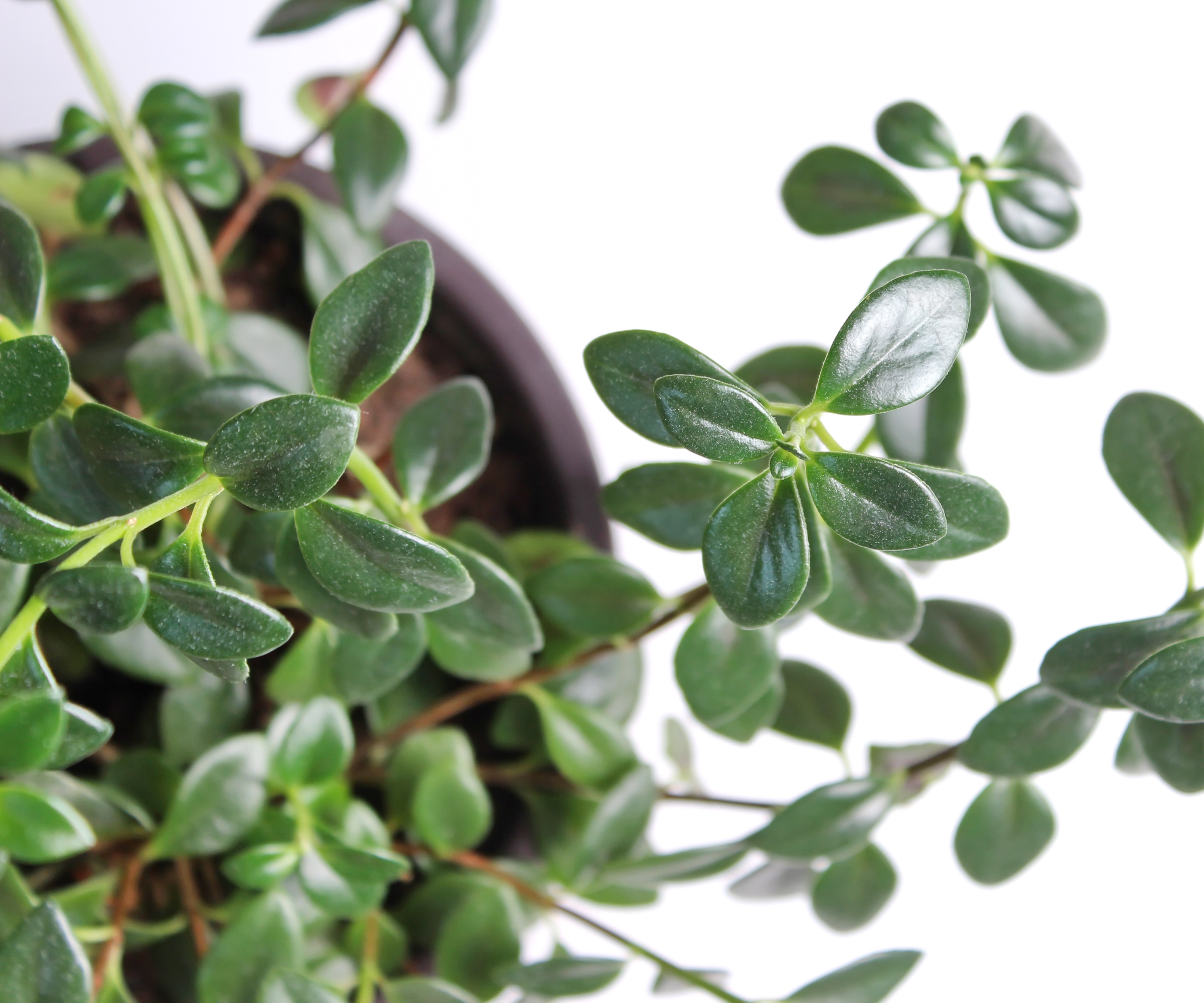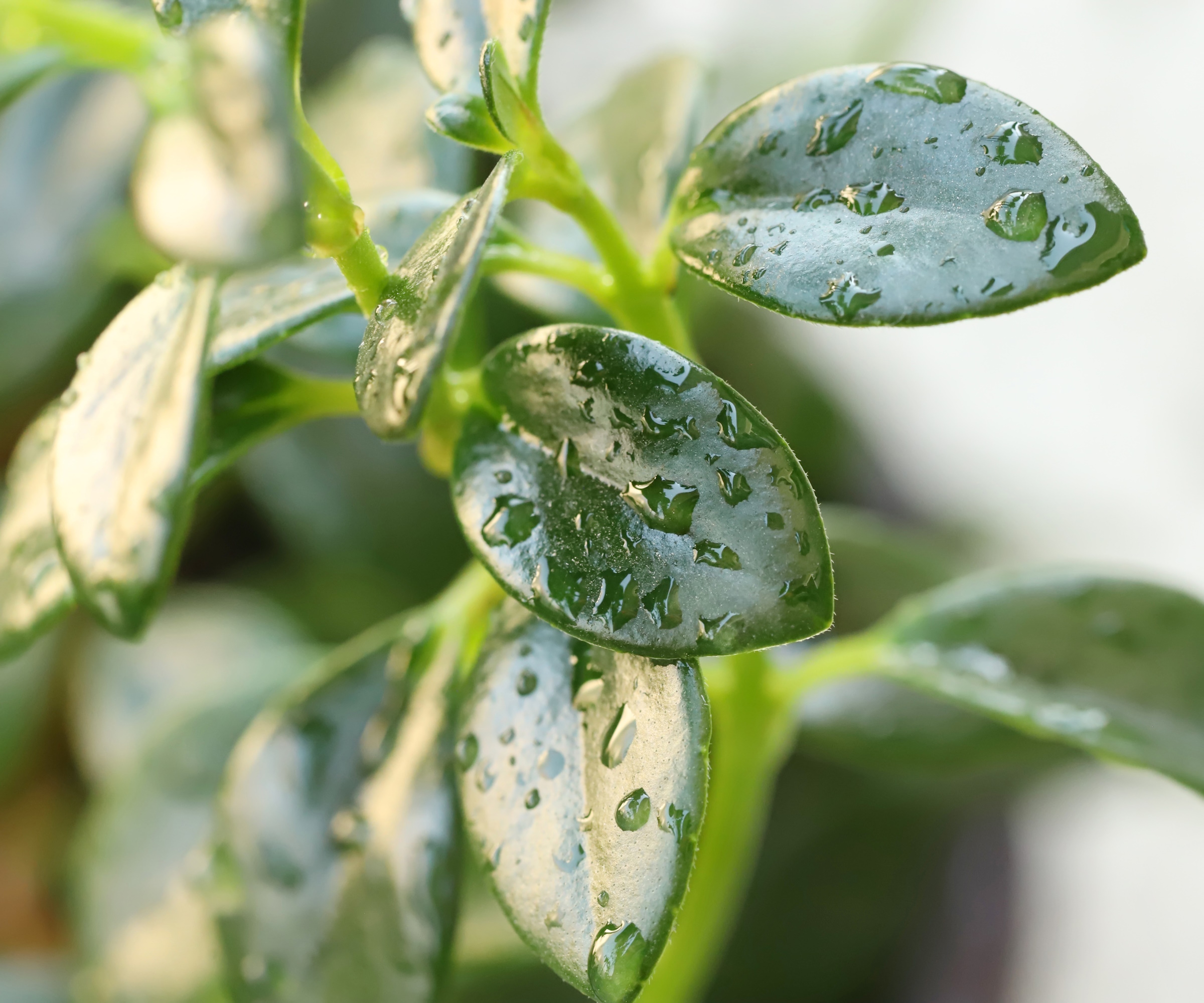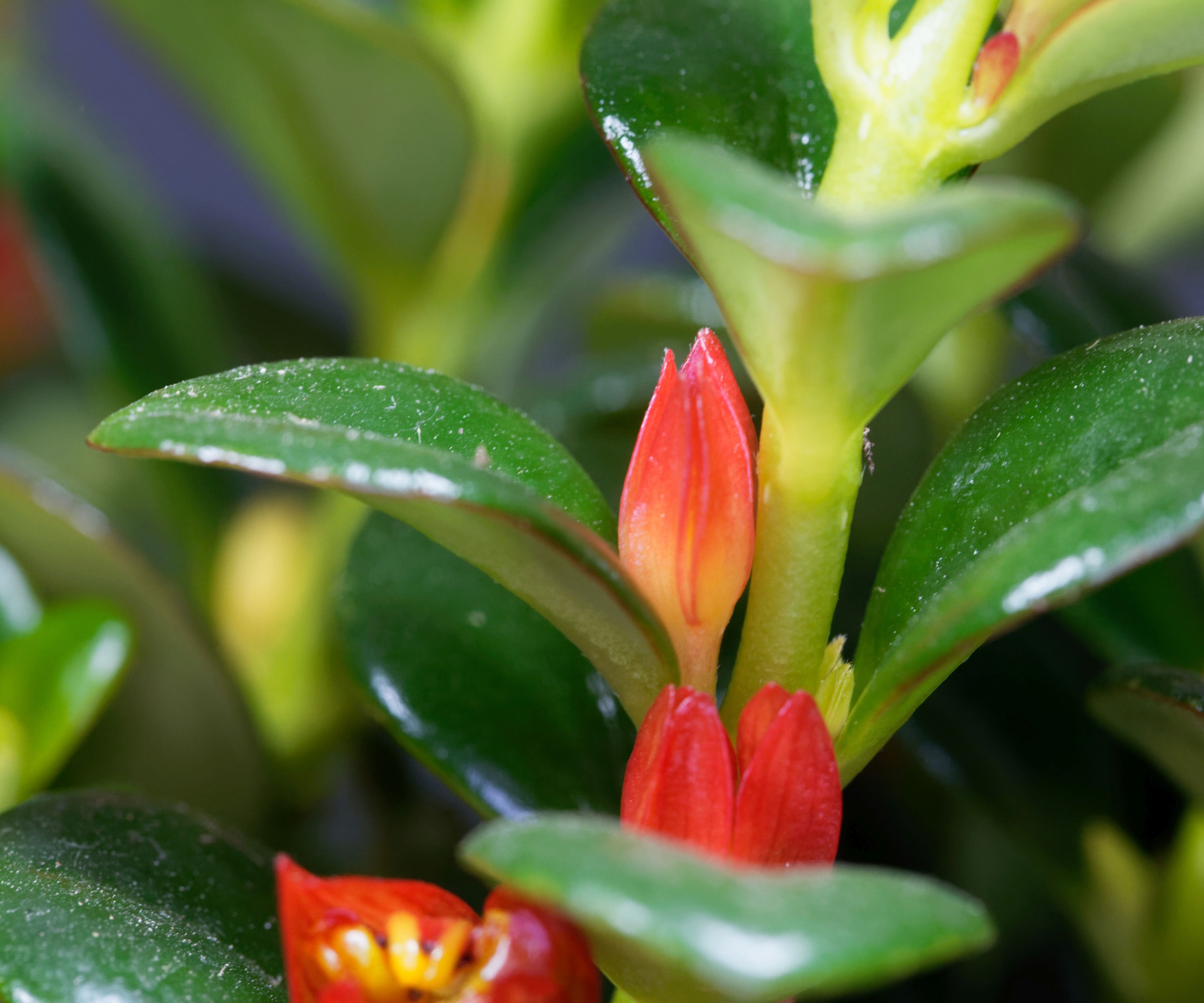
Goldfish plants are a trailing evergreen perennial that produce bright red-orange flowers in the spring and summer months. These flowers are where the term 'goldfish' derives, as they sit among the foliage of the plant looking like small swimming fish against a leafy backdrop.
Being generally easy to care for, if you're looking for an unusual houseplant to add a pop of color to your home without being too bold, a goldfish plant would be a high contender when the winter comes to a close.
We talked to experts to learn about all things goldfish plant care and growth, so you know how to keep one thriving as part of your plant collection.
Ideal conditions for growing a goldfish plant indoors

Goldfish plants grown indoors need plenty of access to sunlight as they originate from a tropical climate. However, this plant is not one of the best indoor plants for direct sunlight as this will causes damage to its leaves.
Ofra Gaito, CEO of Verdant Lyfe plant shop, says, 'Bright, indirect light is best for goldfish plants, as direct sunlight can scorch their leaves. l recommend placing a goldfish plant near a window with filtered light or in a spot with dappled sunlight so the full heat and intensity of the sun isn't beaming down upon it.'
You can move your goldfish plant to different window sills in your home as the sun moves throughout the day, but if you'd rather stick to keeping your plants in one location investing in a window film like the coavas one way window film from Amazon is a good idea. This film adheres to your window and contains UV-blocking properties that will filter some of the heat and harshness of the sun before it makes it to your plant. You'll still be able to see out of your window, too, as the tint is only slight.
Goldfish plants also require a decent level of humidity to grow healthily which isn't usually naturally occurring inside of someone's home. To increase humidity for indoor plants, place a humidifier in the room and make sure it's switched on for at least a couple of hours per day.
The everlasting comfort 2.5L humidifier for plants on Amazon has over 50,000 high ratings and is easy to refill and clean between uses. Combine using this with regular readings of your home's thermometer to ensure your plant won't be in a cold room, and you're right on track.
Watering an indoor goldfish plant

Overwatering and poor drainage are two of the most common mistakes people make when growing and caring for a goldfish plant, and it's quite difficult to fix an overwatered plant after the damage has been done.
Since goldfish plants are a sun-loving species, it can be easy to think they will be in a constant state of thirst whereas in actuality they're rather drought tolerant and appreciate light watering only when their soil feels dry to the touch.
'Water your goldfish plant when the top 1–2 inches of soil feel dry to the touch, usually once around every 5–7 days,' says Ofra.
You can keep track of this in a calendar or better yet, use a moisture meter like the XLUX soil moisture meter from Amazon to tell you when your plant's soil is in need of hydration. If your plant isn't already in a self-draining pot, too, like Amazon's utopia home plant pots for indoors with drainage, it would be a great idea to transfer your goldfish plant into one. This will give surplus water somewhere to go so it won't be rotting the roots of your plant and creating waterlogged soil.
Feeding and pruning goldfish plants

Especially during their peak period of blooming in the spring to summer, goldfish plants benefit from fertilizers which contain high levels of phosphorus, nitrogen, potassium, iron and magnesium. These nutrients help them to bloom and prevent yellowing in the veins of their leaves.
Jessica Mercer, senior content marketing coordinator and plant expert at Plant Addicts, says, 'Feeding the plant lightly with a balanced liquid fertilizer every two to four weeks during the growing season supports healthy growth and blooming.'
The triple 10 all purpose liquid fertilizer from Amazon is a good all-round fertilizer to boost soil nutrients for the good of your backyard and indoor garden, containing notably high levels of nitrogen, potassium and other nutrients.
As well as maintaining solid nutrient levels in your goldfish plant's soil, it's also important to prune the branches of a goldfish plant back in spring before blooming season begins.
'Trim the plant in early spring before the growing season starts, cutting back long or leggy stems just below a leaf node,' says Jessica. 'Pruning encourages bushier growth and more flowering on your goldfish plant.'
To prune your goldfish plant's stems and avoid pruning mistakes along the way, it's recommended to use a small pair of hand pruners like the ones in the 3 pack of gardening pruning shears from Amazon. Using a small pair allows you to be in the most control when pruning, making precise cuts as close to the bottom of your goldfish plant's stems as possible.
Key conditions for growing a goldfish plant outdoors

Although goldfish plants aren't difficult plants to keep, they are rather picky about their climate. It's one of the main reasons why the majority of people opt to grow goldfish plants indoors instead of outside as they are better able to control factors such as light, shade and humidity.
'Goldfish plants prefer warm, humid conditions and thrive in temperatures between 65 to 75 degrees Fahrenheit,' says Jessica, 'They are best suited for USDA hardiness zones 10 to 11. Outside of these zones, these plants are commonly grown indoors as houseplants.'
If your climate falls between those of zones 10 to 11, your goldfish plant can stay outdoors either planted in the ground or inside of a pot. For it to thrive, it requires lots of indirect sunlight throughout the day and frequent light watering. Be careful not to over-water this plant though - it will require watering often in such a tropical climate, but in small amounts. Otherwise, and in most cases, your goldfish plant will be in better health if it's grown as a part of your indoor garden ideas.
FAQs
How long will my goldfish plant live for?
'Some well-maintained plants can live for 10+ years, especially when they are kept in optimal conditions (proper light, humidity, watering, and fertilization),' says Ofra Gaito, CEO of Verdant Lyfe. 'Goldfish plants tend to grow up to 2-3 feet (60-90 cm) in length when they're at their maximum height, so you'll know when your plant has reach maturity if it's around this height overall.'
There are many other tropical houseplants that will enjoy the same humid environment as your goldfish plant. These ten thirsty houseplants, for instance, will really enjoy the added moisture your humidifier brings to the room.







